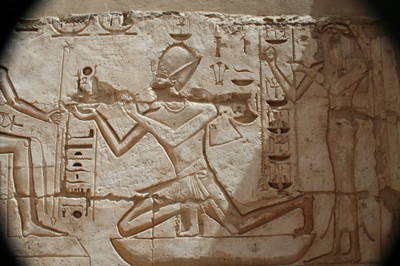There's a compelling showbiz mythology of the modern big city-the energy and the abundance, the proximity to culture and power, the streets that just might be paved with gold. We've seen it and we've loved it, on stage and on screen. But we all know that in reality big cities are noisy, potentially violent and alarmingly anonymous. We sometimes just can't cope with the sheer mass of people.
现代大城市简直是创造了一种嚎头十足的娱乐圈神话—能量充沛、物欲横流,文化与权力高度集中,仿佛街道都可以是黄金铺成的。舞台上、屏幕上那一切的一切,我们对其“所见即所爱”。然而我们也深知,在现实中,大城市也充斥着嘈杂、潜在暴力和惊人匿名性。有时,我们简直就是无法应付这样庞大、高度集中的人群。
Apparently, if you look at how many numbers we're likely to store in our mobile phone, or how many names we're likely to list on a social networking site, it's very rare even for city dwellers to exceed a couple of hundred.
显而易见的,假如你看一下通常我们手机上可能储存的电话号码,或者我们在社交网站上添加的好友名单,就会发现经常一个城市居民的社交圈人群很少会有超过几百。
Social anthropologists delightedly point out that this is the size of the social group we'd have had to handle in a large Stone Age village. According to them, we're all still trying to cope with modern city life with a Stone Age social brain.
于是乎,社会学家得意洋洋地指出,早在石器时代的大村落里,几百这个数字我们恰好可以应付得来,这就是当时一个社会群体的合理大小。
So how do you lead and control a city or a state where most people don't know each other, and you can only personally persuade a very small percentage of the inhabitants? It's the central theme of this week's programmes, and it's been the key political question for over five thousand years, since the growth of the world's first cities and states.
那么,你应该如何领导和控制一个城市与国家呢?绝大多数人都不认识彼比,你自己也只能亲身说服比例非常小的居民。这是我们本周节日的中心主题;而且在超过五千年的人类历史上,自从世界上第一座城市、第一个国家的出现,这也是一个关键的政治问题。
These grew up in the world's great fertile river valleys, the Euphrates, the Tigris and the Indus, but I want to start with the most famous river of them all, the Nile.
最早期的城市与国家崛起于世界上伟大的肥沃河谷里,幼发拉底河、底格里斯河、印度河等等,然而我想从这所有河流中最著名的尼罗河开始。
"There's no doubt that warfare and the coercive power of the king is very much at the heart of the regime from an early period." (Toby Wilkinson)
“毫无疑问,国王的战争力与威摄力自古以来就是制权的心脏要素。”托比•威尔金森说道。













